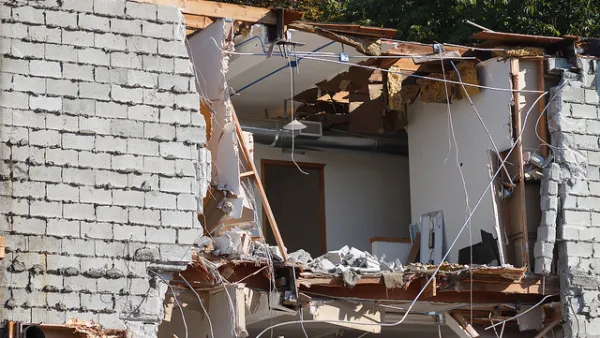According to an article by The Urbanist, some Seattle publications might have been caught telling people what they want to hear, rather than offering clear perspective on the building trends of the city.
A post by Ethan Phelps-Godman critiques recent claims by multiple publications about an "enormous and unprecedented increase in demolitions." The problem, according to Phelps-Goodman: it "simply isn't true."
"The erroneous analysis started in Schema Design's ARCADE magazine, which ran a story and accompanying graphics showing the number of demolition permits per year growing from a mere 14 in 2005 to an expected 875 in 2015. Knute Berger followed up with a column in Seattle Magazine that cited the ARCADE piece and a supposed 8-fold increase in demolitions. In reality, demolitions are down from their previous peak in 2007 and 2008 and roughly in line with long-term trends."
The error arises from bad data in a dataset titled 'Building Permits issued in the past five years,' which has since been corrected. According to Phelps-Goodman, the data only looks "plausible if you're already inclined to believe the article's conclusions."
Better data, according to Phelps-Goodman, is found with the Department of Planning and Development, which shows demolitions up for 2014 from the 20-year average and declining in 2015—far from the eight-fold increase claimed in Seattle Magazine.
Phelps-Goodman acknowledges that the definition of "a lot" can vary—so the current levels of demolitions might still seem some high to many people. But better data and the correct historic comparison can offer a more accurate perspective on current trends.
FULL STORY: FACT CHECK: NO EXPLOSION IN DEMOLITIONS

National Parks Layoffs Will Cause Communities to Lose Billions
Thousands of essential park workers were laid off this week, just before the busy spring break season.

Retro-silient?: America’s First “Eco-burb,” The Woodlands Turns 50
A master-planned community north of Houston offers lessons on green infrastructure and resilient design, but falls short of its founder’s lofty affordability and walkability goals.

Delivering for America Plan Will Downgrade Mail Service in at Least 49.5 Percent of Zip Codes
Republican and Democrat lawmakers criticize the plan for its disproportionate negative impact on rural communities.

Test News Post 1
This is a summary

Test News Headline 46
Test for the image on the front page.

Balancing Bombs and Butterflies: How the National Guard Protects a Rare Species
The National Guard at Fort Indiantown Gap uses GIS technology and land management strategies to balance military training with conservation efforts, ensuring the survival of the rare eastern regal fritillary butterfly.
Urban Design for Planners 1: Software Tools
This six-course series explores essential urban design concepts using open source software and equips planners with the tools they need to participate fully in the urban design process.
Planning for Universal Design
Learn the tools for implementing Universal Design in planning regulations.
EMC Planning Group, Inc.
Planetizen
Planetizen
Mpact (formerly Rail~Volution)
Great Falls Development Authority, Inc.
HUDs Office of Policy Development and Research
NYU Wagner Graduate School of Public Service





























